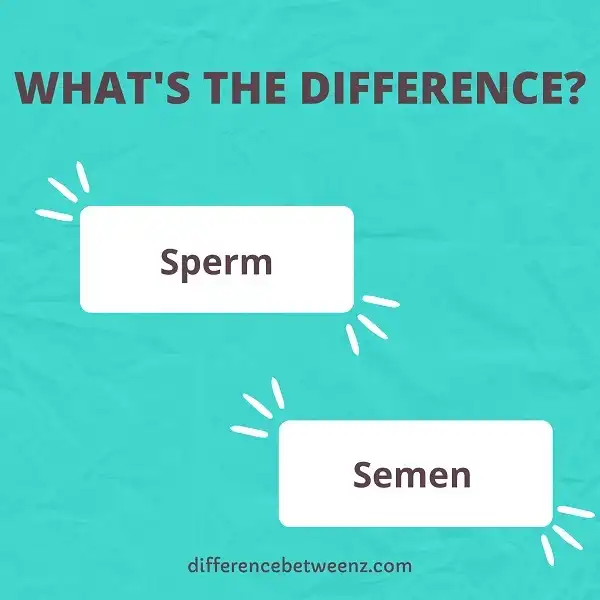In order to understand the difference between sperm and semen, it is important to define each term. Sperm are the cells that carry the male DNA and fertilize the female egg. Semen, on the other hand, refers to the fluid that is expelled from the penis during ejaculation. The composition of semen varies from person to person, but typically contains sperm as well as enzymes and proteins that help support sperm health and mobility. While both sperm and semen are necessary for reproduction, they play different roles in conception. Learn more about the differences between sperm and semen below.
What is Sperm?
Sperm is a reproductive cell that is produced in the testes of male animals. It contains half of the genetic material needed to create a new individual. Sperm is transported to the female reproductive tract, where it fertilizes an egg. The resulting embryo develops into a new individual. Sperm cells are also known as spermatozoa or spermatozoids. They are typically motile, meaning they can move independently. Sperm cells are incredibly small, averaging just 5 micrometers in length. In order for fertilization to occur, a sperm cell must come into contact with an egg cell. This can happen through natural mating or through artificial methods such as in vitro fertilization. Sperm cells have a number of different parts, including a head, neck, and tail. The head contains the nucleus, which houses the DNA. The neck connects the head to the tail, and the tail helps to propel the sperm cell through the female reproductive tract. Sperm cells are produced in the testes through a process called spermatogenesis. Sperm cells typically live for about 48 hours after they are released from the body. However, they can survive for up to five days if they are stored infertile conditions.
What is Semen?
Semen is the fluid that is released through ejaculation. It contains sperm, which are the male reproductive cells, as well as other fluids that help to nourish and transport the sperm. Semen is produced in the testicles and stored in the epididymis until ejaculation occurs. During sexual arousal, the nerves signal for the muscles in the epididymis to contract and force the semen into the vas deferens. The semen then travels through the urethra and is expelled from the body through the penis. Semen is generally whitish in color and has a slightly viscous consistency. It has a distinctive smell that is often described as earthy or musky. Semen typically has a bitter taste. Semen composition can vary depending on a number of factors, including diet, hydration levels, and overall health.
Difference between Sperm and Semen
Sperm and semen are often used interchangeably, but they are actually two different things. Sperm is the male reproductive cells that are responsible for fertilizing the egg. Semen, on the other hand, is the fluid that Sperm travel through and is made up of Sperm and other bodily fluids. Semen also contains nutrients and sugars that Sperm need to survive. While Sperm make up a small percentage of the total volume of semen, they are vital to the reproductive process. without Sperm, conception would not be possible. Semen serves as a protective environment for Sperm and helps to transport them to the egg. It is important to remember that Sperm cannot survive outside of the body for more than a few minutes, so it is essential that they be ejaculated into the woman’s vagina as soon as possible after intercourse. If you are trying to conceive, it is important to have sex regularly so that there is a higher chance of Sperm coming into contact with the egg. There are a number of factors that can affect Semen quality, including age, diet, smoking, and stress levels. If you are concerned about your Semen quality, talk to your doctor about ways to improve it.
Conclusion
So, what is the difference between sperm and semen? Seminal plasma makes up around 60% of semen volume. It contains fructose (a sugar) to nourish the sperm, as well as proteins, vitamins, minerals, and other trace elements that help keep the sperm healthy. The prostaglandins in semen cause uterine contractions which can help propel the sperm towards the egg. Sperm make up around 40% of semen volume and are responsible for fertilization. They are very sensitive to changes in their environment and can die within minutes if they’re not kept in a suitable environment.


